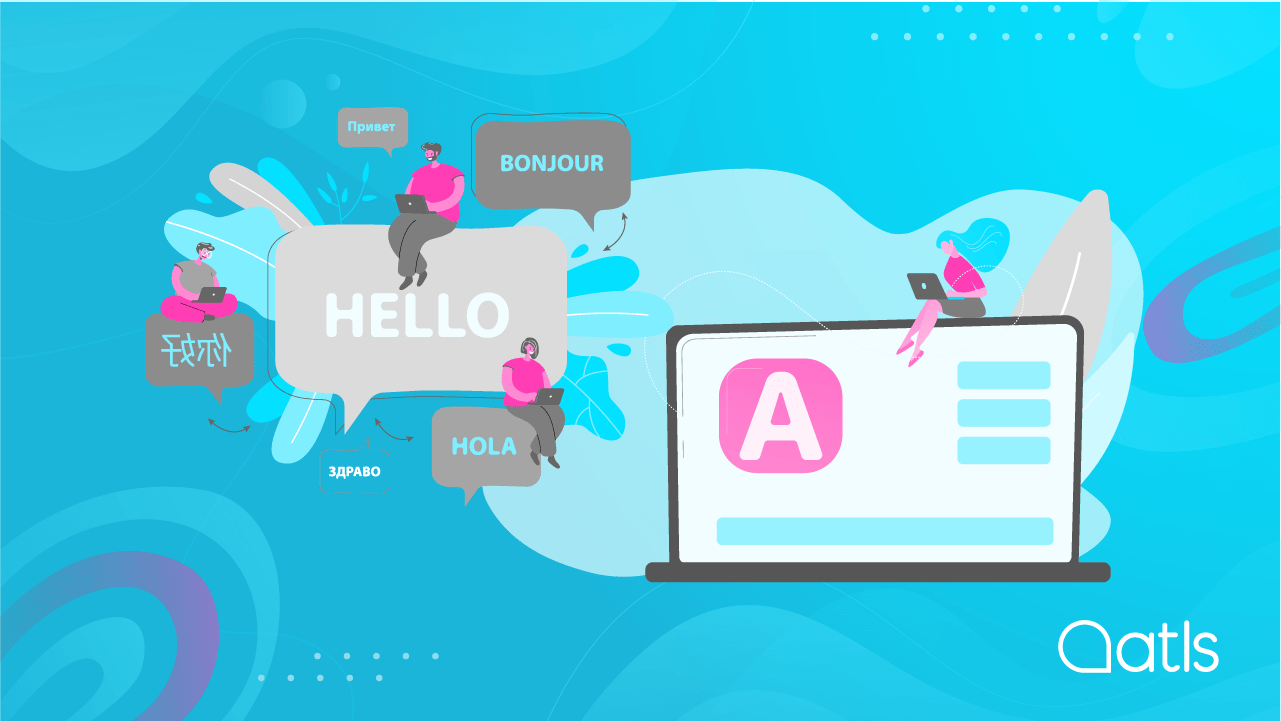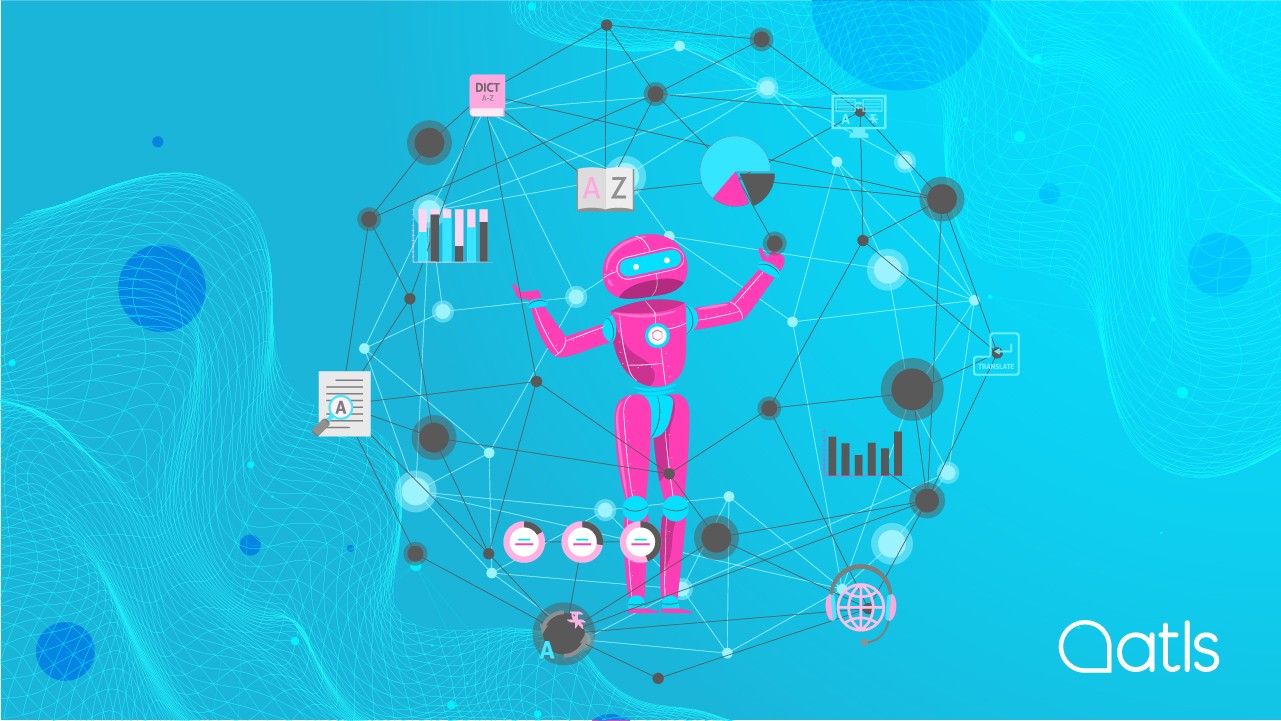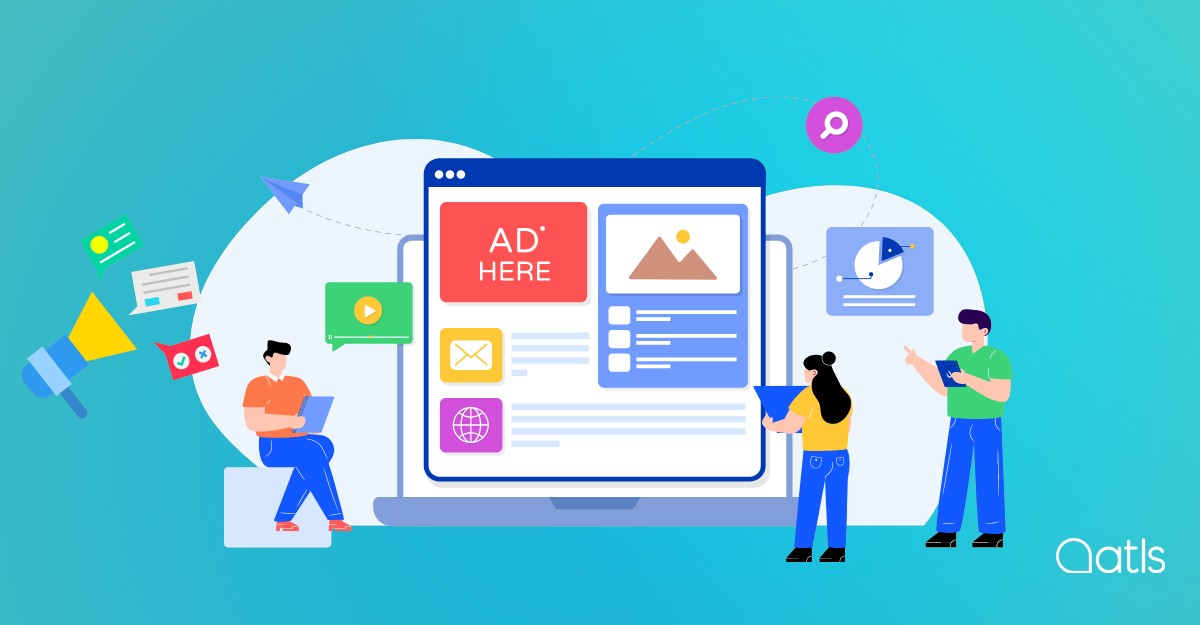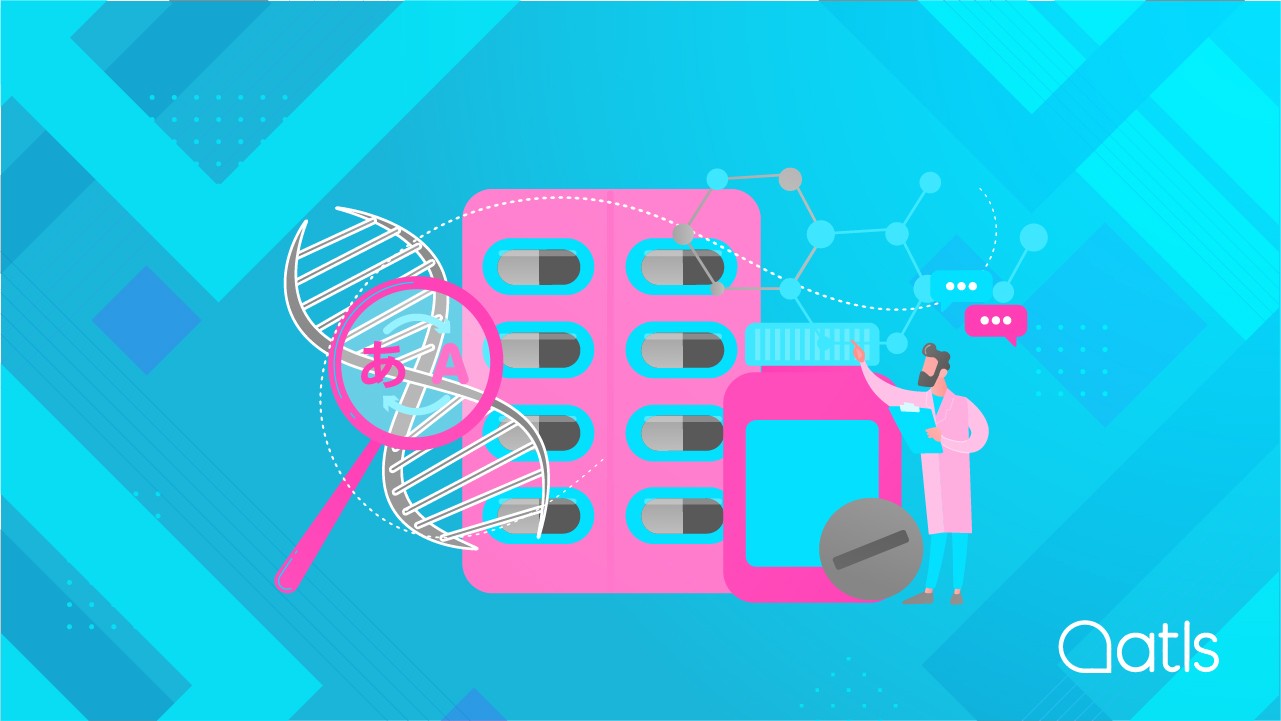Can I use ChatGPT for my translations?

It's the new artificial intelligence (AI) revolution that everyone's talking about: ChatGPT. But what exactly is it? How can it help us? Why is it such a technological breakthrough? In short, ChatGPT is a chatbot that uses the GPT-3.5 artificial intelligence language model, an improved version of the previous GPT-3 model, developed by Open AI. It's a bit like the chatbots you come across on customer service sites, but it's light years ahead of the rest in terms of understanding, contextualisation, naturalness and creativity.
Contents
- What is ChatGPT?
- How exactly does artificial intelligence work?
- Some examples of AI in everyday life
- How can we use AI in translation?
- Neural machine translation
- Can I use ChatGPT for translations?
- Advantages of using ChatGPT for translations:
- Disadvantages of using ChatGPT for translations:
- How can we all benefit from ChatGPT?
- How can ChatGPT help you?
- What do we think at ATLS?
What is ChatGPT?
ChatGPT is an AI-based chatbot system launched in November by OpenAI to show what an incredibly powerful language model is capable of. You can ask the tool all types of questions and will always get a useful response.
For example, you could ask it questions like: "Explain Newton's Laws of Motion to me". Or, "Write me a poem". And when it's written given you a poem, you can say: "Now make it more exciting". You can ask it to write a computer program showing you all the different ways the letters in a word could be arranged, or prepare a diet for you in line with your personal preferences, and so on...
But Chat GPT isn't a chatbot with in-depth knowledge in a specific area. According to Alba García, an AI expert at ATLS, "it's an artificial intelligence tool trained to recognise patterns in large quantities of text gathered from the internet, and then trained with the help of humans to offer better and more useful conversations". Some of the answers you get make a lot of sense, but on the flip side they could also be completely wrong: as OpenAI itself warns.
Large multinationals looking for ways to help their customers get the information they need have been working with chatbot-programming companies for years. But chatbots come with a lot of baggage. Companies have already tried to use them in place of humans to manage customer services work, with limited success. A survey financed by Ujet - a company providing customer contact management technology - revealed that 72% of the 1,700 questioned thought chatbots were a waste of time. Humans always prefer interaction with other humans.
How exactly does artificial intelligence work?
Artificial intelligence (AI) is a machine's ability to present the same skills as human beings such as reasoning, learning, creativity and planning capacity.
AI gives technological systems the power to perceive their environment, relate to it, solve problems and act for a specific purpose. The machine receives data (which has already been prepared or gathered through its own sensors), processes it, and responds to it.
To an extent, AI systems can adapt their behaviour, analyse the effects of previous actions and work autonomously.
Some examples of AI in everyday life
Online shopping and advertising
Artificial intelligence is frequently used to create personalised recommendations for consumers, based on previous searches and purchases or other online behaviour, for example. This is how advertising on Google Display works for instance. AI is used to improve and optimise advertising on Google Display. It segments audiences, optimises campaigns, personalises and searches for adverts, with the aim of showing ever-more relevant and effective adverts to browsers.
Online searches
Search engines learn from the large amount of data users provide to offer relevant search results. Using ranking algorithms, they essentially sort the elements of a group (in this case websites) according to different criteria.
Google's PageRank algorithm is what made it the leading search engine, but it's now defunct, and in fact had nothing to do with AI. Since 2013, the engine has been using a language model (the same type of system as ChatGPT, but for a very different purpose).
The criteria used to sort the data change over time (which is why we love a particular type of professionals so much: SEO specialists).
Personal digital assistants
Personal digital assistants are programs or applications that help users to perform everyday tasks such as scheduling reminders, making phone calls, sending messages or searching online, among others.
Personal digital assistants use various AI techniques to do this, including natural language processing (NLP), machine learning (ML), voice recognition and speech synthesis (text-to-speech), which is the reverse process the assistant performs when responding to your command. NLP gives these assistants the power to understand and respond to user queries - in natural language. ML means the PDA can learn from the data and improve performance over time. Voice recognition enables users to interact with assistants using voice commands.
Examples of personal digital assistants harnessing the powers of AI are Apple's Siri, Amazon's Alexa, Google Assistant and Samsung's Bixby. Each uses different AI techniques to improve their performance and provide a more personalised, more satisfactory user experience.
ARTIFICIAL INTELLIGENCE
Daily and potential use
Examples of current AI applications and the possibilities it offers.
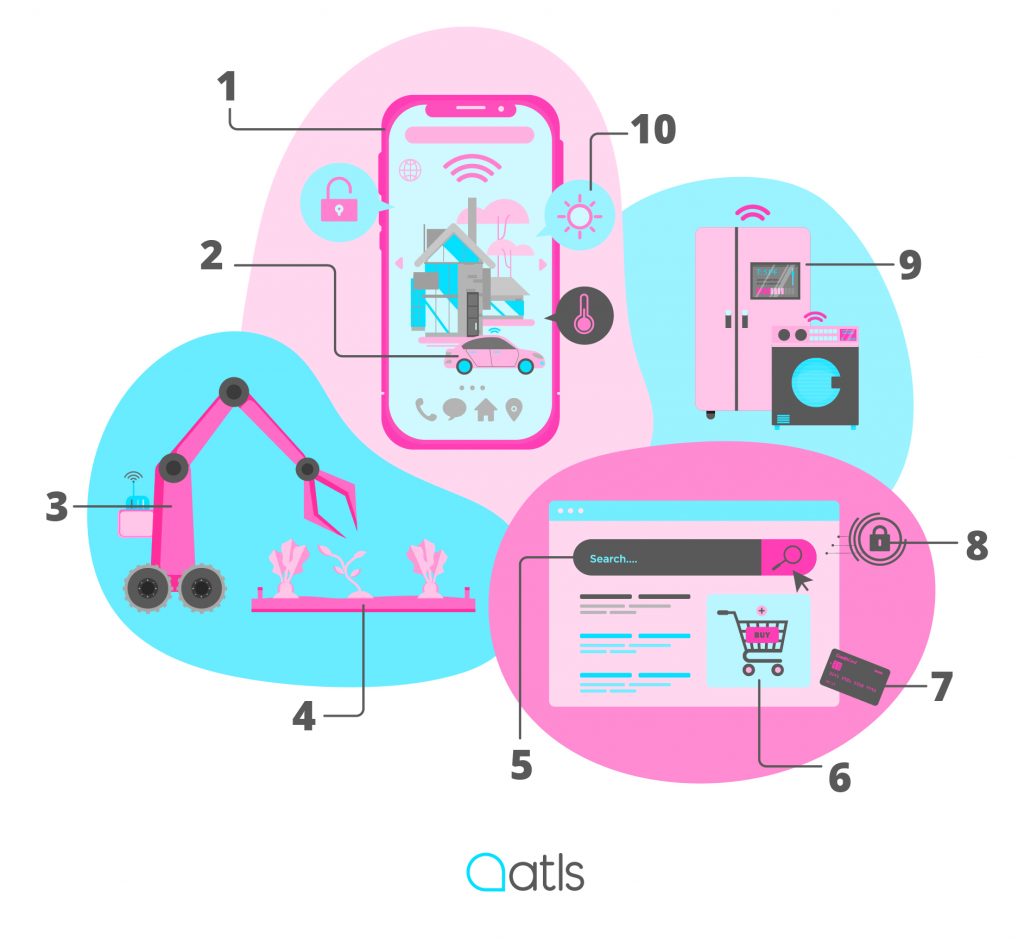
- Personal digital assistants on smartphones or PCs
- Driverless vehicles
- Manufacturing robots
- Smart farming
- Machine translation web search
- Online purchases and advertising
- Product and sales process optimisation
- Cybersecurity, the fight against disinformation
- Internet of things: smart vacuum cleaners, refrigerators, watches, etc.
- Smart air conditioning
How can we use AI in translation?
So what's the relationship between machine translation and AI? Machine translation uses AI techniques and algorithms to perform translations.
There are various approaches to machine translation, but the most common are:
- Machine learning: text is translated based on machine learning. Large amounts of translation data are used to train a machine learning algorithm.
- Neural networks: the current model of machine translation utilises deep-learning neural networks (a type of machine learning used by models with many - very complex - layers). This model also uses training: huge amounts of data are processed to create a language model (like ChatGPT) that can produce a text in a target language based on equivalents of the source language (just as translation always has).
Neural machine translation
A new approach called neural machine translation (MT) has emerged in recent years, which may well be capable of achieving near-human translation quality.
Neural machine translation is carried out by an artificial neural network, an AI system that streamlines the translation process into any language.
It harnesses the power of a new generation of machine learning systems called deep neural networks. These systems use complex internal representations, extracting patterns from data in order to learn to perform tasks. In the case of translation, the data consists of large amounts of both original and translated texts, and the task at hand is to predict the translation based on the original sentence. Interestingly, with neural systems the translation process is similar to the human translation process. The original sentence is first processed and then transformed into a language-independent representation as learnt by the system during training. The translated sentence is generated by taking into account not only the content of the original, but also the patterns and conventions of the target language.
ATLS has more than 20 years of experience in machine translation services. As a result, the company possesses rich bilingual dictionaries, linguistic information and domain-specific translation data. We combine the latest developments in data-driven MT technology with these invaluable resources, allowing neural MT to function effectively and provide the best translation solutions, customised according to our clients' needs.
Can I use ChatGPT for translations?
You can use ChatGPT to generate literal automatic translations. You could also use it as a translation assistance tool, entering text in one language and asking ChatGPT to translate it into another language. However, it all comes with a (rather large) caveat. The quality of translations generated by a machine language model such as ChatGPT will never be like a human translation done by a native translator.
Advantages of using ChatGPT for translations:
- Speed: machine translations are much faster than human translations.
- Cost: Machine translations via ChatGPT are free - just like Google Translate or DeepL.
- Availability: you can get translations 24 hours a day, 7 days a week.
Disadvantages of using ChatGPT for translations:
- Quality: translation quality won't ever be the same as human translations, these are literal translations that don't take context into account.
- Decontextualisation: machine translations work on a word-for-word basis; they don't take into account the context in which the text is used, and in many cases this results in inaccurate or misleading translations.
- Unusual languages: ChatGPT can struggle with rarer languages or regional dialects.
- Grammar and syntax problems: these translations may have grammar and syntax issues, which can lead to confusing, difficult-to-understand translations.
In short, whilst this chatbot promises a revolution, it's still light years away from being used to translate texts (with high quality results). There's no doubt about it. If you don't want to run the risk of translations creating distrust among your potential customers, the best option - as always - is to opt for a professional translation company with native translators who specialise in your sector. This is (at least so far) the only guarantee of quality - and the success that comes with it. In the business world, you should only use these free machine translation tools for understanding texts in another language. It's too risky to use it any other way, as poor translations can cause you a lot of grief. We've all heard the phrase "you get what you pay for".
How can we all benefit from ChatGPT?
It's easy to start having conversations with this artificial intelligence tool. All you have to do is go to the official website. You'll need to create an account on the OpenAI website the first time you visit (it's completely free to use).
Once you've logged in, you can start the chat. At the bottom, you'll find a text input bar where you can write your questions.
How can ChatGPT help you?
Text generation: ChatGPT can generate text autonomously, making it useful for tasks such as writing articles, emails, text messages, etc.
Automated responses: ChatGPT can be used to generate automated answers to frequently asked questions, which can help reduce the burden on customer service agents.
Summarising text: ChatGPT can summarise large volumes of text, which can be useful for data analysis tasks.
Writing assistant: ChatGPT can be used as a writing assistant. It can suggest words or phrases to complete or improve the text.
Understanding language: ChatGPT can be used as a language comprehension tool. If you don't understand an email, you can copy/paste it and ask it to translate it into your own language.
Literal translations: if you need to translate a sentence, going to ChatGPT is an easy solution. But remember, these translations will likely contain errors in syntax and grammar, and lack contextualisation.
What do we think at ATLS?
As we've seen in this post, we're convinced ChatGPT represents a turning point in artificial intelligence. According to Alba García, an AI expert at ATLS, "ChatGPT is a cutting-edge language model developed by OpenAI that has proved particularly effective in several tasks related to natural language processing". She adds, "its ability to generate coherent text and its excellent language comprehension skills make it a valuable tool for a variety of applications, from text generation to personal assistance with translations". Nevertheless, "it's important to remember that, as with any automated model, it does have limitations and can make mistakes with some tasks, especially with something as complex as translation".
At ATLS, when it comes to AI, we're committed to working with neural machine translation. Why? Because this technology harnesses the powers of deep learning to connect the relationships between words and phrases in different languages and generate machine translations. Neural machine translation creates high quality translations, and is considered one of the most advanced technologies in the field of machine translation.
Whilst ChatGPT can generate text and perform tasks related to natural language processing, it hasn't been designed specifically for machine translation.
To summarise, both are advanced technologies and can be useful for various applications, but if the aim is to use AI to yield a high quality translation, neural machine translation is always the better option. If, on the other hand, you need to generate text or carry out other helpful tasks, ChatGPT is a valuable tool.
Do you need to translate documents, websites, ecommerce or apps? Get in touch! We'll find the best solution to suit your needs - and your budget.

